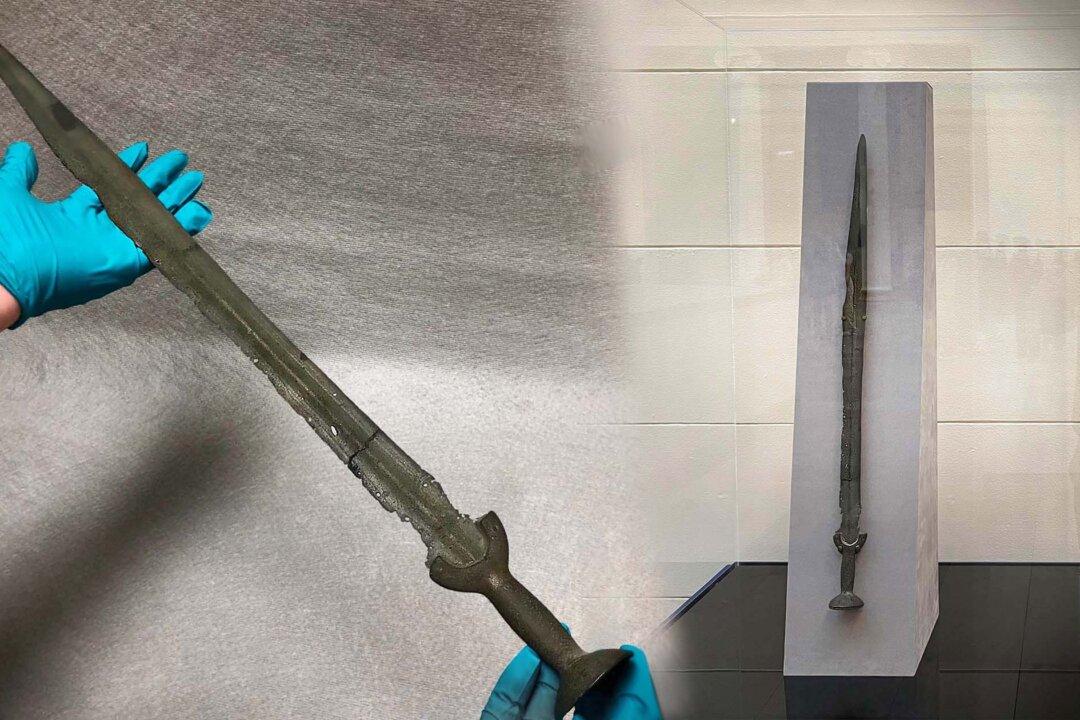Perhaps it was war, or perhaps love, that motivated the ritual whereby a 3,000-year-old brown Bronze Age sword was plunged into the Danube River in what is now modern-day Budapest, Hungary. The descendants of the Eurasian nomads who once inhabited this region might have wished to commemorate a battle or the loss of a loved one by depositing a cherished weapon into the river.
Believed to date from 1080-900 B.C., according to a Field Museum press release, the sword wouldn’t be retrieved from the Danube for another three millennia. It was discovered in the 1930s before being acquired from Europe by Chicago’s Field Museum. But because it was in such good condition—almost entirely untarnished by time—for nearly a century, the museum assumed it was just a well-made replica.






